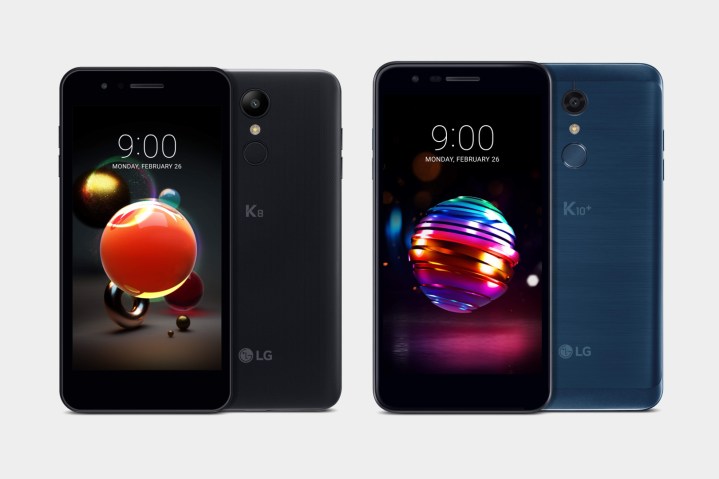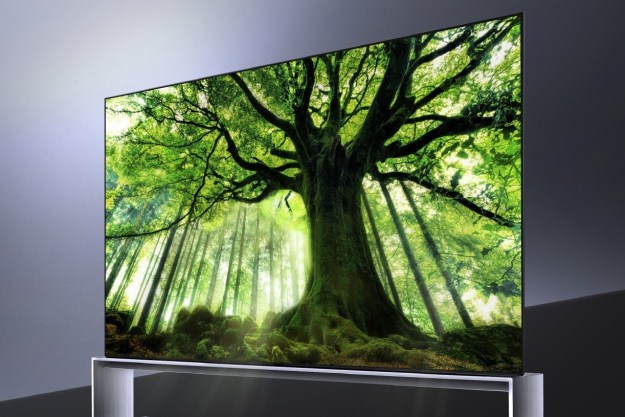
LG will announce new additions to its K8 and K10 budget range at MWC 2018. The new additions will seemingly focus on bringing flagship-level photography to the budget market.
LG K10
The K10 comes in three different editions, all with a 5.3-inch screen running a 1,280 x 720 resolution. Buyers will be able to choose between the standard K10, the K10+, and the K10α (“Alpha”). The K10 and K10α will sport similar internal specs, rocking 2GB of RAM and 16GB of onboard storage, while the pumped up K10+ contains 3GB of RAM and 32GB of initial storage. As in the K8, all three versions of the K10 will have a MicroSD card slot, and be capable of expanding available storage by up to a mighty 2TB. It’s all powered by a hefty 3,000mAh battery.
The K10 and K10+ will both be equipped with the same 13-megapixel camera technology we saw on the LG G6, an impressive addition to a budget phone. However, the K10 only has a single lens, and it won’t be wide-angle. Around the front of the K10 and K10+ you’ll find two lenses — an 8MP lens and a wide-angle 5MP lens. Together, those support the “bokeh” portrait mode we saw on many 2017 flagships and a wide-angle selfie mode, allowing users to get larger groups in shot or show more of the background. This camera suite is backed up by LG’s PDAF auto-focus, which LG claims is 23-percent faster than normal auto-focus.
The K10α seems to be a lower priced version, likely intended for developing markets, and sees a small downgrade in camera tech, having an 8MP lens on the rear and a single 5MP normal lens on the front. It seems to still support the PDAF seen on the other versions.
The rear of the metallic-style K10 will house the fingerprint sensor, which also works as a Quick Shutter for the camera.
LG K8
The smaller LG K8 comes in a single edition, and will sport a 5-inch display running the same 1,280 x 720 resolution as the larger K10. The device comes with 2GB of RAM, 16GB of onboard storage, and the option for up to 2TB of expandable storage with a MicroSD card. The 2,500mAh battery seems small by today’s standards, but should be more than sufficient to keep the modest specifications running for a good battery life — and it’s also removable and replaceable.
You’ll find a similar camera suite to the K10α on the K8 — an 8MP lens on the rear and a 5MP on the front. The tech has been tweaked from the last K8, improving low-light performance and keeping fan-favorite features Auto Shot, Gesture Shot, Flash for Selfie, and Quick Share.
Both phones will come in a variety of colors, including Aurora Black, Moroccan Blue, and Terra Gold. You can find more of what to expect at MWC 2018 in our handy guide.
Editors' Recommendations
- New Amazon Fire HD 10 brings improved performance to the big-screen tablet
- LG Velvet vs. OnePlus 8: Budget flagship throwdown
- LG brings new 4K TVs, 8K TVs, and a Samsung Frame TV look-alike to CES 2020
- LG will show off an OLED 4K TV that rolls down from the ceiling at CES 2020
- The dual-screen LG G8X ThinQ launches on November 1 for just $700



